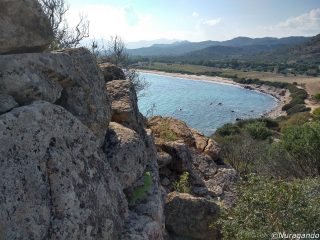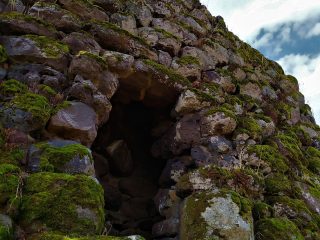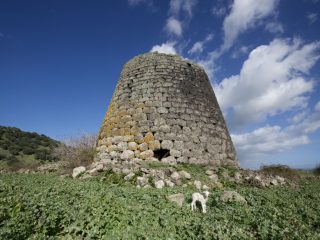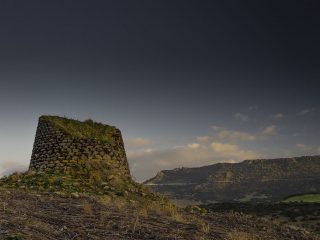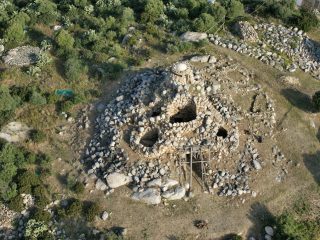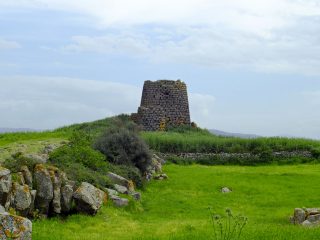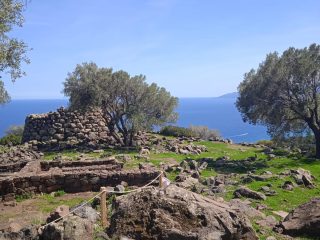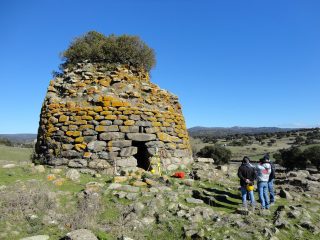The archaeological site covers an area of at least one hectare and is less than 900 metres from the well-known archaeological compound of Monte Sirai.
This is a multi-layered site with a Nuraghe complex and a village. The Nuraghe was built in the Middle or Recent Bronze ages (XV-XIII century B.C.) while the village, which was most likely installed in the Final Bronze age, expanded mainly in the Iron age.
The circle with basin dates back to the Iron Age I (IX-VIII century B.C), a building probably used for worship and widespread on the island at that time. The construction of the enclosure wall also dated to that period. Between the end of the VII century and the start of the VI century B.C., the inhabitants of the village built a unique fortress. It had a series of embankments. At this stage, the Nuragic circle was also constructed, which was surrounded by walls decorated with fish-bone slabs, similar to those identified at other late-Nuragic sites. While the embankments which make up the fort bring to mind the near-eastern ones, the area of worship and several other buildings in an elliptical layout are of Nuragic origin. Indeed, both the structure of the settlement and the materials found bear witness to a mixture of Nuragic and Phoenician elements.
The hybridisation process between the two elements are also found in the ceramics. The number of Nuragic fragments found is more or less similar to that of the Phoenician fragments. There are also “hybrid” ceramic shapes with both Nuragic and Phoenician elements. The settlement had a very artisan nature. Archaeologists have identified a ceramic laboratory, a tannery and even a workshop for glass production.
From Cagliari: take the trunk road SS 130, to km 44 then turn right towards Carbonia (country road SP2). When you reach Villamassargia, turn right at km 57 onto the trunk road SS126 (in the direction of Sant’Antioco); at around 1800 m turn right and follow the directions.







